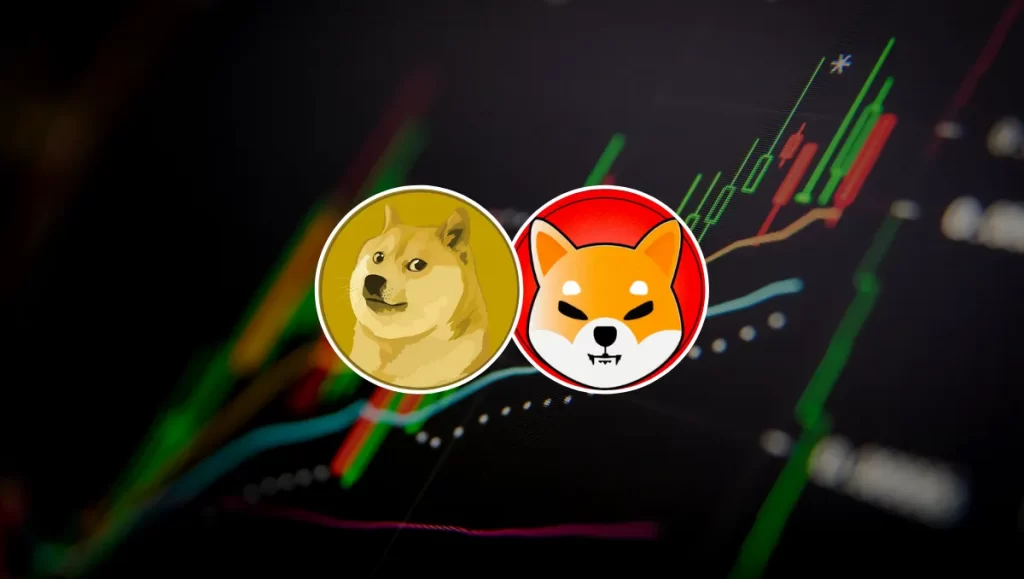The post The Battle Of The MemeCoins – Shiba Inu vs. Dogecoin, Which Will Win The Race in the Next Bull Run? appeared first on Coinpedia Fintech News
Shiba Inu (SHIB) made its debut in the crypto market in August 2020 as a direct competitor to Dogecoin. It was rolled out by an anonymous founder Ryoshi and is based on the Ethereum blockchain. In 2021, Shiba Inu outperformed Dogecoin and overtook it for a short period, garnering a community of loyal fans.
There is no clear answer to the confusion about which will perform better in the next bull run: Shiba Inu (SHIB) or Dogecoin (DOGE). However, factors including ecosystem development could help us determine how far the two coins are likely to reach.
The next crypto bull run isn’t very far off now. Messari, an analytics firm, has put forward seven noteworthy trends that could lead to the bull market trend. These trends include apps, decentralized social trends, web3 gaming trends, new layer ones (L1s), Ethereum rollups, and others.
The uptrend is already making progress, all along with the dog-inspired token – Shiba Inu, which was created to make up for what Dogecoin lacked in functionality. Although DOGE was nothing more than a joke initially, it acquired meme status thanks to billionaire Elon Musk’s constant tweets in its support.
After it climbed to a peak value of $0.000086 on Oct. 28, 2021, SHIB crashed by 87% after the massive rally last year. This led to market participants re-evaluating the coin’s status and managing their holdings accordingly.
Despite its decline since the previous year, SHIB has remained the 14th largest cryptocurrency, with a market value of $6.11 billion. DOGE, however, has a market value of $7.98 billion, making it the tenth largest crypto asset. Dogecoin is down by 92% from its all-time high of $0.7315, which it touched on May 8, 2021.
SHIB Vs DOGE: The comparison
Being an ERC-20 token, SHIB makes use of a proof-of-work mechanism that gives it a similar transaction rate to Dogecoin for all intents and purposes. The idea behind the association with Ethereum was that its connection with the second largest crypto network would draw developers and users to SHIB.
Another strategy that the Shiba Inu ecosystem utilizes to boost its token price and gain an edge over dogecoin is ‘Burning’. According to Shib Burn, more than 410 trillion SHIB have been burned to date.
All along, Dogecoin has been known for its active community and celebrity endorsements, but eventually, the price of an asset is determined by supply and demand. DOGE does not exercise burning, which means that instead of capitalizing on scarcity, dogecoin’s supply is infinite.
This makes it inflationary, meaning that it has the potential to affect value negatively over time. Dogecoin has always remained true to its remit of creating a genuine peer-to-peer payment system by adopting an inflationary mechanism.
In mid-August, SHIB soared by more than 42% in a day. However, it lost all the gains by the end of the month. Now, the network is set to launch the Shiba Eternity game on Oct. 6, which could act as a bullish catalyst for the meme coin.
Shiba Inu already operates a decentralized exchange (DEX), which allows users to transact peer-to-peer. The SHIB DEX is to be upgraded to ShibaSwap 2.0. Plans are being laid for a metaverse, which is a part of a grand plan to bring on more users to support SHIB demand and propel its price higher. It can be noted that a decentralized exchange is yet to be made available on dogecoin.
SHIB Vs DOGE: Whale Holdings
For DOGE, the Tesla founder Elon Musk frequently expresses his support for the canine-inspired coin on Twitter. He has denied owning any SHIB on multiple occasions. However, analysts believe that Musk’s tweets about dogecoin have minimal effects on DOGE’s market price.
Notably, Ethereum whales love SHIB. According to WhaleStats, the top 100 Shiba Inu holders, minus exchange addresses and project wallets, also hold Ethereum (ETH). About nine wallets own more than 1% of the outstanding supply of SHIB from the list of rich holders.


